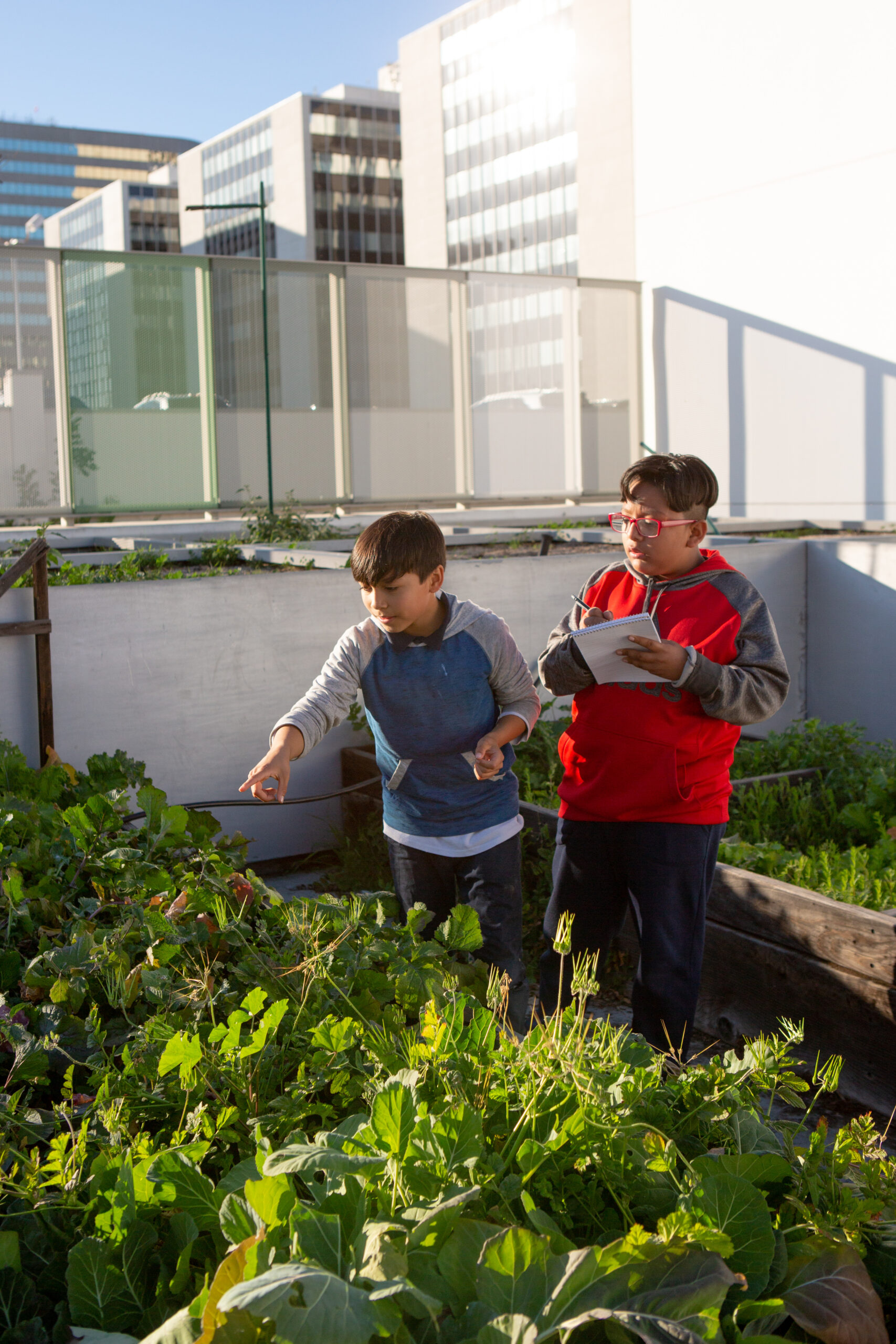
“PPS Langley is one of nine schools in the district that are designated as community schools. Unlike traditional neighborhood public schools, the community public school model focuses on providing services that support the neighborhood’s needs by involving parents and other community members. They often partner with local businesses and organizations and have an integrated focus on learning opportunities, health and fulfilling basic needs.
The pandemic reinforced the importance of community schools, when schools needed to meet a range of needs outside the classroom. The Coalition for Community Schools estimates there are about 5,000 community schools in the country.
Students run through the tiny town made of Lilliput Play Homes in the library at Duquesne K-8, on Dec. 12, in the city of Duquesne. The town features a child-sized veterinarian office, gym, bookstore, trolley and other Main Street mainstays in which students and library visitors can engage in dramatic play. (Photo by Stephanie Strasburg/PublicSource)
Outside the city, Communities in Schools of Pittsburgh-Allegheny County [CISPAC] is helping districts build community schools across the region. Last year, they began implementing the full-service community school model across eight school districts in Allegheny County.
Community schools across Pittsburgh serve as hubs of the neighborhoods in which they operate. Many go far beyond delivering instruction and offer resources such as food, clothing and after-school programs with a focus on mental health and reducing violence in the community.
A spreading model with federal friends
Although the model is relatively new for Pittsburgh-area schools, community schools have, over the past two decades, reported successes in states including Texas, Florida, Ohio, California, Maryland and Minnesota.
In Cincinnati for example, all schools became community schools following a policy passed in 2001. From 2006 to 2015, research showed that the achievement gap between Black and white students in the Cincinnati school district decreased from 14.5% to 4.5%. In the Minneapolis area, the Brooklyn Center Community Schools saw district-wide behavioral references cut in half in the first five years as a community school system.
On Nov. 28, the Biden-Harris Administration announced almost $74 million in grants for full-service community schools in Idaho, Missouri, New Hampshire and Ohio. The next day, senators from Ohio, Maryland, New York and New Mexico introduced The Full Service Community School Expansion Act of 2023, which is a comprehensive bill aimed at helping more public schools implement the wrap-around services of a full-service community school model.
The long-term success of community schools depends on consistent funding, according to Jennifer Kotting, communications strategist for The Partnership for the Future of Learning, a national network dedicated to supporting public education.
“It’s really ongoing [funding] that is needed to maintain a really strong set of possibilities in each community school,” Kotting said.
Duquesne: Reducing violence through conflict resolution
CISPAC’s full-service community school approach stands on four pillars: integrated student support, expanded and enriched learning opportunities, active family and community engagement and collaborative leadership.
School districts such as Sto-Rox, Duquesne and Pittsburgh are hoping the community schools model will help students deal with trauma stemming from violence in their neighborhoods.”